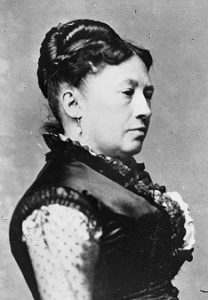International Environmental Education Day is today! Children could investigate various biomes, animal, and plants. Then they could make a diorama of their findings.

Flag of India
India celebrates Republic Day. It gained its freedom from Great Britain in 1950. According to the CIA World Factbook, India is a third the size of the United States, but its population is more than three times the population of the United States. India has almost every ecosystem in the world. The Himalaya Mountains are in the north; India also has deserts and tropical rainforests. New Delhi is the capital. Children can learn more at: India.

Flag of Australia
Australia was founded in 1788. It may be the smallest continent, but it is the sixth largest country. Aborigines settled in Australia at least 40,000 years ago. The Dutch were the first Europeans to explore the area, and they called the continent New Holland. However, Captain James Cook declared in 1770 that the land belonged to Great Britain. Australia became a penal colony when 700 prisoners were transported there in 1788. Gold was discovered in 1851. It became a commonwealth in 1901. Idea: Australia is home to many marsupials. Children could research some of these animals and then make a play where Captain Cook explores Australia and finds these animals. Children could also learn more at: Australia.

Michigan State Flag
Michigan became the twenty-sixth state of the United States in 1837. The state borders four of the five Great Lakes. It has more coastline than any other state except Alaska. The state capital is Lansing, and its nicknames are the Wolverine State and the Lake State. It ranks twenty-third in area and eighth in population. Children could visit an Internet site at: Michigan. Children could also make a map of Michigan and the Great Lakes it borders.

Bessie Coleman
Bessie Coleman (born Atlanta, Georgia, 1893; died Jacksonville, Florida, April 30, 1926) was the first African-American woman to earn an airplane pilot’s license. Children could view a website devoted to Bessie Coleman at: Bessie Coleman. Children could also read Talkin’ About Bessie, written by Nikki Grimes and illustrated by E. B. Lewis.
Mary Elizabeth Mapes Dodge (born New York, New York, 1831; died Onteora Park, New York, August 21, 1905) was an author and an editor. Her most famous work is Hans Brinker; or The Silver Skates. The 1865 novel has had more than one hundred editions and has been translated into at least six other languages. Children could see a tribute to her at: Mary Mapes Dodge. Children could read some of her works at: Project Gutenberg.
Jules Feiffer (born New York, New York, 1929) is a cartoonist. He illustrated The Phantom Tollbooth, written by Norton Juster. He wrote and illustrated a number of books for children, including A Room with a Zoo and The Daddy Mountain. In 2007 his daughter Kate wrote Henry, the Dog with No Tail; he illustrated her book. He received the 1986 Pulitzer Prize for his editorial cartoons.
 Julia Dent Grant (born St. Louis, Missouri, 1826; died Washington, D. C., December 14, 1902) was America’s First Lady from March 4, 1869 to March 4, 1877. She was the wife of Ulysses Grant, the eighteenth president of the United States. Grant was an army officer, and much of their married life was spent on the frontier in the garrisons. Mrs. Grant actually enjoyed the comparatively easy life of the White House. Children could visit a website at: Julia Dent Grant.
Julia Dent Grant (born St. Louis, Missouri, 1826; died Washington, D. C., December 14, 1902) was America’s First Lady from March 4, 1869 to March 4, 1877. She was the wife of Ulysses Grant, the eighteenth president of the United States. Grant was an army officer, and much of their married life was spent on the frontier in the garrisons. Mrs. Grant actually enjoyed the comparatively easy life of the White House. Children could visit a website at: Julia Dent Grant.
Shannon Hale (born Salt Lake City, Utah, 1974) writes fantasy and science fiction books for young adults. She has published at least 35 books, and her book Princess Academy received a 2006 Newbery Honor Award. Children could visit her website at: Shannon Hale.
Douglas MacArthur (born Little Rock, Arkansas, 1880; died Washington, DC, April 5, 1964) was a general who became famous for his leadership in the South Pacific during World War II. He uttered his famous line, “I will return,” when the Japanese forced him to leave the Philippines. He did return.